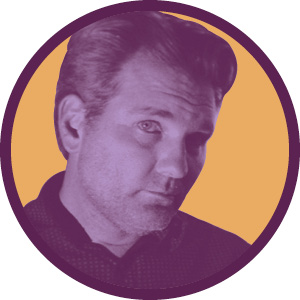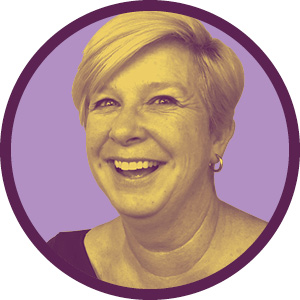THE GATEKEEPERS

Emily Brundige
Head Writer
Big Nate
Nickelodeon

Megan Nicole Dong
Showrunner
Netflix

Mark Edwards
VFX Supervisor
DreamWorks
Animation

Kendall Haney
Story Editor/
Head Writer
Unannounced Show
Mattel

Rob Hoegee
Executive Producer
and Head Writer
Apple TV+

Jackie Huang
Senior Talent Development Manager
Cartoon Network Studios

Brooke Keesling
Head of Animation Talent Development
Bento Box Entertainment

Vanessa McAteer
Senior Director of Artistic Recruitment
DreamWorks Animation

Matt Roberts
Recruiter
Walt Disney Animation Studios

Marc Scott
VFX Supervisor
DreamWorks Animation

Paula Spence
Art Director/
Cartoon Network Studios
HOW TO CREATE A WINNING ONLINE PORTFOLIO
A strong online portfolio is a key promotional tool to get you hired. Preferably, this portfolio is presented as a dedicated website that is clean, organized, and easy to navigate, with information and artwork that lets you shine.
INTRODUCE YOURSELF
Just be you: Use a URL that includes your name. Huang says websites and social media pages that use nicknames can be hard to find and make it difficult to contact a person.
Make an impression: Along with your resume, include an “About Me” page to convey your personality—a few paragraphs describing your background and your goals. When evaluating many people with similar experience for the same position, Spence says this “can be very useful in helping me make a decision about who I contact.”
Showcase your best work
Be selective: As you choose the work to include in your portfolio, keep in mind that whatever you pick is “what you’re going to get more work doing,” Huang says. So not only choose your best work, but the work you
like doing best.
Stay focused: If your portfolio is all over the board, it’s hard to know what you’re good at doing and what you want to do. If you have more than one area of expertise, Keesling suggests creating an easy-to-navigate tab to a separate page for each skill and making “the things you want to be hired for really findable.”
Let go: If work doesn’t represent the best that you can do, don’t include it just to have a larger portfolio or to show your range. Experts agree that quality will always beat quantity.
Get organized: Your website should be easy to explore. According to McAteer, a disorganized website can “drive away traffic, deter interest in the work, or hinder a recruiter’s ability to see the range in the work.”
Specify: When you apply for a job, Roberts recommends curating your website to that position. This doesn’t require a complete overhaul, but “submit a link to the specific section that’s relevant to what you’re applying for; we can always explore the rest of your site if we want to see more later.”
Divvy up: While your social media can showcase your work, consider it a separate entity from your online portfolio. Keesling notes that on your Instagram page, she might have to sift through photos of your cat to find your art, which is fine if there’s a place she can go—your dedicated online portfolio—to get a clear understanding of your talent and skills.
Find a home: Along with free website builders such as Wix, Weebly, GoDaddy, and the like, a common place for online portfolios is Artstation. Avoid any type of blog-style platform that requires scrolling through dated entries to explore your work.
PRO TIP FOR PORTFOLIOS
“Watch the credits of the shows you like, or look up people you admire on IMDB. What does their online portfolio look like? That can give you clues to what you should put in yours. If they’re working, whatever they did worked for them.”
–Brooke Keesling
HOW TO NAVIGATE SOCIAL MEDIA & FORUMS
If someone likes your work in your portfolio, they may want to poke around your social media sites to see more. Or someone might stumble across your work on Instagram. But in general, according to Roberts, “We discourage using social media as your sole platform of presenting your portfolio. It often doesn’t make for the cleanest or most efficient format for showcasing your work, plus it doesn’t show any thought in your application.” Dong adds that your actual portfolio will always be more relevant to hiring than your social media, so consider social media a nice opportunity to complement your portfolio.
Connect yourself: Include links to your social media on your website, and vice versa. Make sure, wherever someone finds you
online, that all roads lead back to your portfolio.
Socialize: Dong feels social media is a great way for people to engage with their community. Follow people you admire. Tag fellow artists. Actively create a network that will draw people back to your social media pages, and therefore to your portfolio.
Find your home: For displaying art, Instagram is the hands-down choice. Roberts says it’s the easiest way for studios and followers to find you.” For writers, Hoegee says, Twitter is the logical choice. If he’s looking for someone to do comedy, he wants to know if their sense of humor is in sync with his project, so he might dip into their Twitter feed.
Use hashtags: Instagram tends to be the most popular place to search, and Huang and McAteer both say that sometimes they will search by hashtags. So on social media, it’s a good idea to always tag yourself by your job. i.e. #storyboardartist #artdirector
Watch your mouth: While most say they don’t use social media to vet people, it is agreed that you shouldn’t use social media or forums to gripe about everything in your life. “If you complain all the time to random people you don’t even know,” Hoegee wants to know how will that manifest at work. Keesling adds, “We’d always rather hire someone who gets along well with people.”
Speak up: Edwards says it can help boost your online presence if you’re actively answering questions and providing feedback in forums. He notes that Autodesk, Foundry, SideFX, and Blender are all greatplaces to engage and offer a sense of your abilities and technical prowess. Another place to participate online, McAteer says, are professional LinkedIn Groups.
HOW TO ASSEMBLE A SUCCESSFUL REEL
When your portfolio calls for a reel, there are a few musts—and a couple don’ts—that are essential for capturing the right kind of attention.
Choose a platform: There isn’t a blanket preference for platforms, as long as your reel has smooth, high-resolution playback. The most commonly used platforms are YouTube and Vimeo.
Link it: Don’t use big files that need to be downloaded. Make sure you have a link to access your reel. Not only are links easy to view, they are easier for an employer to share.
Think small: As you decide what you want to include, keep in mind that the agreed-upon sweet spot for a reel is between one and a half to three minutes. It’s better to have a few short reels highlighting different skills, than one too-long reel that includes everything you can do.
Control quality: Scott notes the importance of full playback speed, low compression, and color accuracy. For the latter, he says, “If the color or gamma of your content is broken, it can really torpedo an otherwise fantastic reel.”
Simplify: Reels often contain too much content. Focus on your best work and avoid repetition. Showing multiple passes of a shot may be nice for an important shot, but Scott says, “It can drastically reduce the impact of your reel and may pull the reviewer out of the content.” He also notes he has seen reels slim on content because the artist might be starting out, but it was made up for with “editing, menus, titles, and additional details in the reel,” as well as exceptional personal work.
Highlight quality: Emphasize how you used specific tools. “One extremely complex, beautiful shot involving multiple characters and FX elements with detailed breakdowns of each component done by a single artist will give more insight than a dozen same-as shots where the artist inherited a lead lighting rig and sweetened characters slightly,” says Edwards.
Let It flow: McAteer recommends taking the time to create a reel that flows smoothly from shot to shot. She suggests a bookend approach: start with one of your best shots to engage the viewer, and then end on another prime shot to leave a strong impression.
Add more: Include information that describes your contribution to each shot. For burn-in text added directly to your video, Scott suggests something very short and simple at the bottom or top of the frame for each shot: name of project, name of company, and your contributions. For example, “texturing” or “compositing only.” McAteer adds she also wants a burn-in of your contact info at the beginning of the reel.
Break down your shots: Provide a detailed reel breakdown—on your website or a document to be downloaded—with the information you burned in, as well as the software you used. Edwards says this also provides the opportunity “to dive deeper into breakdowns and descriptions for work relevant to the given position.” Make sure all information is relevant to the job you’re applying for. And for those employers who might happen across your website, you can include links or tabs for the different types of work you did, so that someone can view pertinent categories.
Avoid at all costs: Do not include restricted content. If you’re not able to show it or don’t know if you have clearance, Scott says to avoid it always. “I have seen talented artists skipped for a position because they included restricted content.” This is where your resume and website come in, because you can explain what you are working on, and why you can’t share it: in development, untitled project not yet announced, etc.
PRO TIP FOR REELS
“Almost all reel review meetings I’ve attended in my career were run without sound. I know it is common to edit a reel to music, but there is a high probability we’ll be reviewing with sound off. That isn’t to say you shouldn’t add music to your reel. I would just suggest making sure that the artist watch the reel with sound off to make sure it still works and isn’t too cutty or drags too much because of choices made to time with the music.”
–Marc Scott
6 Ways to Craft an Effective Resume
While a resume on your website is fine, nearly everyone agrees that the ideal way to present your resume online is to use LinkedIn—just include the link on your website’s “About Me” page. “LinkedIn is really appreciated by a recruitment team,” McAteer says. “It’s an easy, efficient way to keep your experience and job titles up to date. It also makes you searchable online, which helps us keep track of your career progress.”
State the facts: Essential information includes the studios you’ve worked at, the productions you’ve worked on, and the specific job titles of the positions you’ve held—with exact dates. And make sure your profile always includes your current title and position.
Clarify: Huang says she likes to see two to three bullet points about your roles and responsibilities because “some titles are the same at different studios, but the actual job responsibilities are very different.” Stick with your main responsibilities and specific contributions, McAteer adds. Don’t bog things down with the nitty-gritty.
Mention your training: Include relevant education (especially if you’re just starting out or deeper into your career and learning new technology) and all of the tools you’re proficient at.
Add contact info: This has already been mentioned, but it’s worth repeating: Include contact information or provide a link to your website contact page. You don’t want anyone to struggle to contact you.
Add extras: Additional experience isn’t a dealbreaker, but Huang says that anything that displays leadership skills, such as volunteering or mentoring, is always a plus.
Picture this: Same goes for your photo. Not a dealbreaker, but McAteer says including one is definitely appreciated. Keesling suggests using a more creative image if you’re applying for the art side of animation, and something more professional on the production and administrative sides. Your image, Huang says, “should be whatever you want people to perceive of you.”
CUSTOMIZE YOUR WRITING PORTFOLIO
Most established writers have representation, so the issue of portfolios and samples usually depends on where you are in your career. If you’re established, your agent or manager most likely will be sharing your work with potential employers. But for those starting out or finding jobs on their own, a website is recommended.
All about you: Hoegee says it’s hard to get a sense of a person from their IMDB page. Your website can give insight into “who the writer is as a person,” and Brundige feels the “About Me” page is a great way for potential employers to learn about you.
Add dialogue: Your website should contain entire sample scripts, if possible, showing your range as a writer and/or your specialty. Hoegee likes samples from an existing show (spec or produced) to see how you can work with someone else’s material, and Brundige recommends including an original pilot. This provides a sense of your individual voice as a writer.
Embrace the PDF: Don’t put your scripts directly on web pages. Create links on a web page to PDFs. Triple-check that the links go to the correct scripts, Haney says. “I’ve encountered more than one link going to an incomplete, incorrect, or no script at all.”
Respect the NDA: Make sure your sample is shareable. If you aren’t sure if you have permission, err on the side of caution. Your original scripts, Haney says, are more beneficial anyway, because a produced script has gone through a story editor and/or showrunner, while your original script is you and only you.
Stay current: As with art portfolios and reels, keep everything up to date. It’s great that you worked on a classic back in the day, but that doesn’t show what you can do now.
PRO TIP FOR WRITERS
“One online resource I’ve been using [for hiring] a lot recently is the TAG Airtable Staffing Grid. This has introduced me to a lot of writers I haven’t had the opportunity to get know. [Also], you can post samples—and since this is a closed group and password-protected, it’s an ideal place to make them available to possible employers.”
–Rob Hoegee



